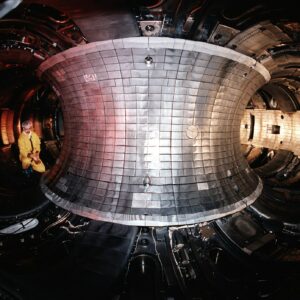Fusion power, the Holy Grail of nuclear energy for decades, may finally be within our grasp.
If the scientists and engineers at Commonwealth Fusion Systems (CFS), a company with close ties to the Massachusetts Institute of Technology Plasma Science and Fusion Center, are right, fusion is nearly ready for power market entry. In Devens, Mass., CFS says it will be ready to ship its first devices in the early 2030s.
That is astounding news, which has been so long in the making that much of the nuclear industry has failed to grasp it.
I first started writing about fusion power in the 1970s. Having been on hand for many of its false starts, I was one of the doubters.
However, after I visited the CFS factory in Devens and saw the precision production of the giant magnets, which are the key to the company’s system, I am on my way to being a believer.
I think CFS can likely manufacture a device it can ship to users — utilities or big data centers — in the early 2030s. If so, the news is huge; it is a moment in science history, like the first telephone call or incandescent light bulb.
Governments, grasping the potential for clean and essentially limitless power without weapons proliferation or radioactive waste, have lavished billions of dollars on fusion energy research worldwide. Intergovernmental efforts in recent years have concentrated on the Joint European Torus, which has wrapped up in Britain, and the International Thermonuclear Experimental Reactor, a mega-project involving 35 nations. Both are firmly in the category of scientific research.
However, in the commercial world, there is a sense that fusion power is at hand, and many companies have raised money and are pressing forward. CFS is on the front of that pack.
There are two technologies chasing the fusion dream: magnetic fusion energy (MFE) and inertial fusion energy (IFE). The former contains plasma at millions of degrees in a magnetic bottle. The trick here isn’t in the plasma but in the bottle.
A version of MFE, called the tokamak, is the technology expected to produce the first fusion power plant. Worldwide, dozens of startups are looking at fusion, and in the United States, eight are considered frontline.
The other method, IFE, consists of hitting a small target pellet with an intense beam of energy, which can come from a laser or other device. It is still in the realm of research.
CFS has raised more than $2 billion and is seen by many as the frontrunner in the fusion power stakes. Italian energy giant ENI supported it from its inception in 2018. Bill Gates’ ubiquitous Breakthrough Energy is an investor. Altogether, there are 60 investors, mostly looking for a huge return as CFS begins to sell its devices.
According to Brandon Sorbom, co-founder and chief scientist at CFS, the big advance has been in the superconducting magnets that create containment bottles for plasma. He told me this had enabled them to design a device many times smaller than had previously been possible.
What makes CFS magnets different and revolutionary is the superconducting wire wound to make the magnets.
Think of the tape in a tape recorder, and you have an idea of the flat wire, called HTS, that is wound into each magnet. The HTS tape is first wound into VIPER cable, or NINT pancakes — acronyms for two types of magnet technology developed by MIT in conjunction with CFS. Then, the VIPER cable, or NINT pancakes, are assembled into magnets that make up the tokamak.
This superconducting wire enables a large amount of current to course through the magnet at many times the previously unavailable levels. This means the device can be smaller — about the size of a large truck.
The next stage is completing the first full demonstration device at CFS, known as SPARC. It is already half-built and should become operational next year.
After that will come the first commercial fusion device, called ARC, which may be deployed in a decade. It will contain, as Sorbom said, “a star in a bottle using magnetic fields in a tokamak design,” and perchance, bring abundant zero-carbon energy to users near you.

 Follow
Follow
Leave a Reply